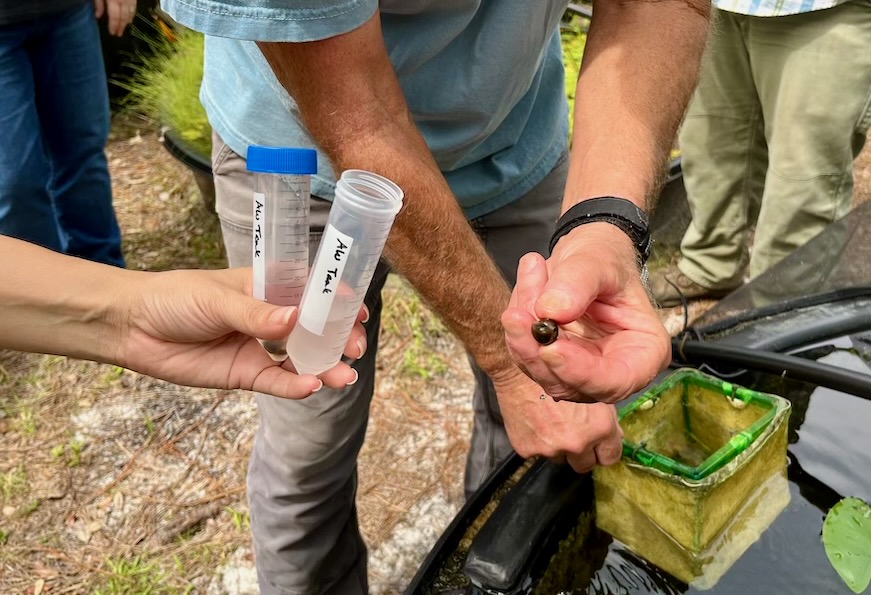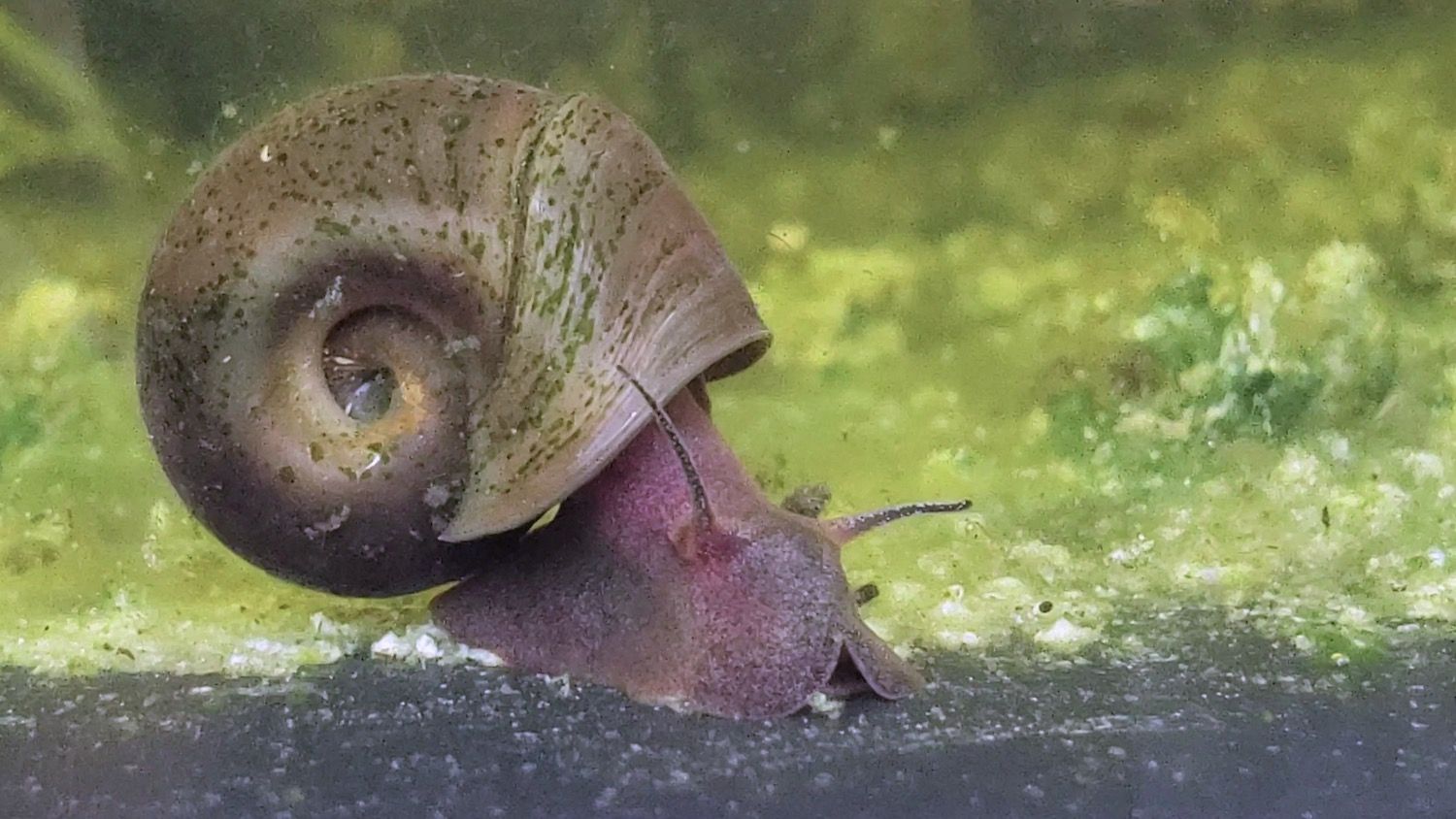The magnificent ramshorn snail or Planorbella magnifica, which loosely translates to flat-beautiful magnificent, certainly lives up to its effusive names. This rare, freshwater, air-breathing snail is the largest Planorbidae in North America, with a shell that can coil out to slightly larger than a half-dollar coin. Today, ramshorns are only found in captivity and their limited population of 1,000 snails exists in three locations.
They are currently proposed to be listed as “endangered” under the U.S. Endangered Species Act, but researchers at NC State’s Department of Applied Ecology have a plan to bring this snail back from the brink.
The ramshorn has not been observed in the wild since 2004, despite an extensive survey effort to locate any remaining snail strongholds in southeastern North Carolina. The three captive populations can trace their origin back to the single heroic mission by conservationist Andy Wood of the Coastal Plain Conservation Group. Wood ventured out during Cat. 3 Hurricane Fran’s landfall to collect as many ramshorns as he could find – of which only 12 survived – and has tended to the snails ever since. This means that the entire ramshorn family tree only has 12 genetic roots, and researchers need to know more about the current genetic diversity in order to safely increase their populations.

A 10-year NC Department of Transportation grant, titled, “Research for propagation and restoration of the Magnificent Ramshorn aquatic snail associated with conservation efforts at the Yates Mill Aquatic Conservation Center” is the fundamental step towards fulfilling the reintroduction effort being proposed by the US Fish and Wildlife Service (USFWS). The bureau aims to designate 739 acres of ponds as critical habitat in Brunswick County to prepare for the recovery of the species.
Prof. Greg Cope is leading the team of applied ecologists set to save the ramshorn from extinction, including AEC alum, Dr. Jennifer Archambault, who is the USFWS Recovery Coordinator for this species. They will work with Chris Eads, who is the caretaker of one of the last three captive populations at NC State.
“We are thankful for the efforts of Andy Wood, Chris Eads, and NC Wildlife Resources Commission colleagues Rachael Hoch and Brena Jones, who have all helped to maintain the three captive populations of snails over the years,” says Cope. “It is thanks to them that we even have this opportunity today to restore and reintroduce the species back into their native habitats in eastern North Carolina.”
This is just one of many projects to be carried out at the new NC State’s Yates Mill Aquatic Conservation Center, slated to open in Spring 2023. The center will be a hub for saving aquatic species threatened by development, changes in water quality/availability, and climate change – like freshwater mussels.
“It will take a village to recover the magnificent ramshorn snail,” says Archambault. “Working together with federal, state, academic, and non-profit partners, the ultimate goal is to reintroduce the snails to where they belong and see them thriving again. Now, wouldn’t that be magnificent?”
To comment on the proposed listing and critical habitat rule, go to the Federal eRulemaking Portal: https://www.regulations.gov/. In the Search box, enter Docket No. FWS–R4–ES–2022–0070.
Comments on the proposed rule must be received by 11:59 p.m. Eastern Time on October 17, 2022.
Read the USFWS press release here: https://www.fws.gov/press-release/2022-08/magnificent-ramshorn-proposed-listing-and-critical-habitat
And the handy FAQ about the ramshorn snail: https://www.fws.gov/story/2022-08/frequently-asked-questions-magnificent-ramshorn
This post was originally published in Department of Applied Ecology.
- Categories:



